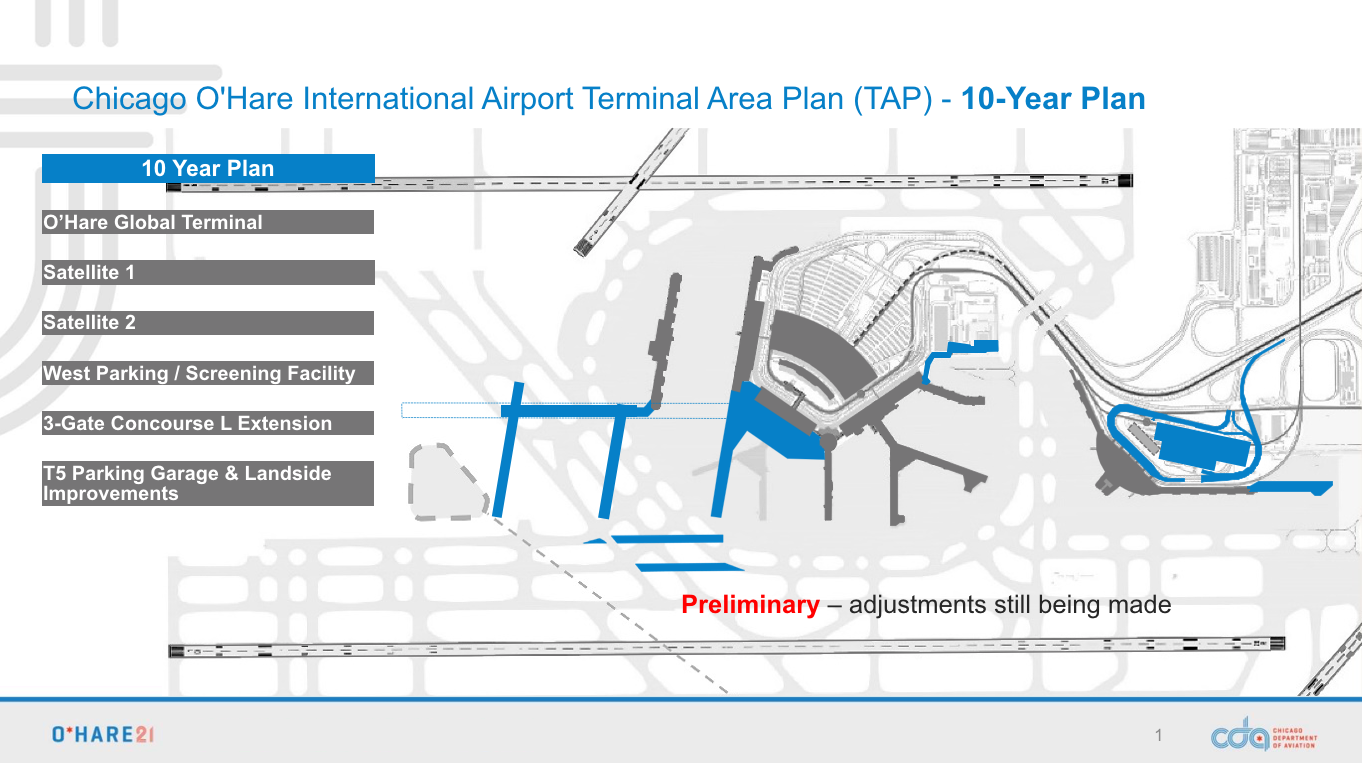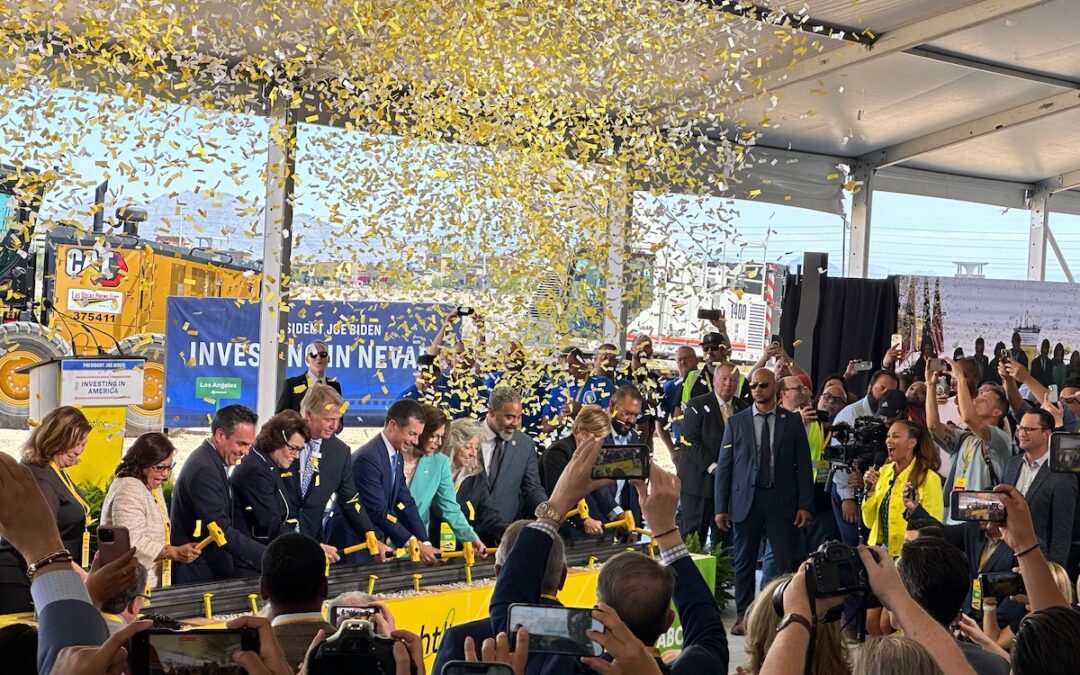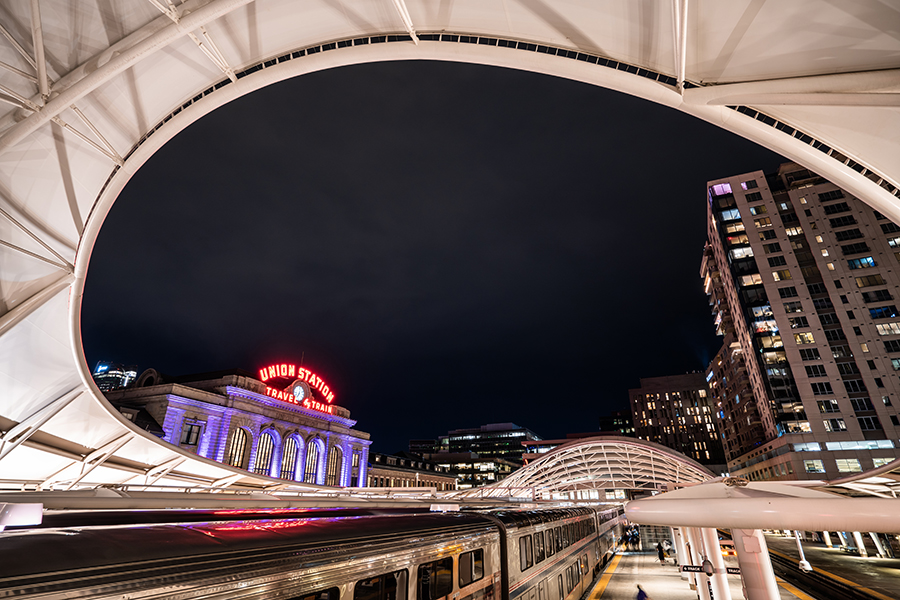The railroad Brightline today broke ground in Nevada on its new Brightline West project. Brightline will use trains traveling up to 200 miles per hour to cut the travel time between Las Vegas and Los Angeles in half. The company already operates successful trains...
Last week, Chicago officials gave a sneak peek at the City’s 10-year plan for its international airport, “O’Hare 21.” The plan, currently awaiting federal approval, would replace the old, domestic-only Terminal 2 with an international terminal. It would also expand Terminal 1, and convert the current international terminal, number 5, to a domestic terminal. Unfortunately, the plan appears to fall short on improving access to the airport.
Just as fast trains will connect destinations within the Midwest, O’Hare is the Midwest’s connection to the world. We’re glad to see Mayor Emanuel planning for the airport’s future, but access for trains from around the Midwest must be included. While O’Hare is connected to the city’s transit system, its global peers also boast direct access by regional trains. (Ever tried getting from Union Station to the CTA Blue Line with luggage? We don’t recommend it.)
Fast train connections around the Midwest would allow airlines to focus their resources on longer flights. Short “feeder” flights are wasteful, not only for the airline, but also for passengers. The O’Hare 21 plan appears to reflect this, with many smaller gates for regional jets replaced by larger gates for standard jets.
Many of our members tell us that a fast train to O’Hare is their number one priority, especially those hundreds of miles away from the airport. They would much rather take a train to their international flight than a cramped and productivity-restricting puddle jumper jet.
Warsaw, Indiana is the global center of the orthopedics industry. More than 30 tech and manufacturing companies are based there, and they waste so much time and energy getting to O’Hare that they commissioned a study. It found that fast trains to O’Hare would save their industry alone more than 1 million person-hours of travel time, worth $45 million, over 20 years. The total economic benefit to their industry and region would be up to $160 million.
CrossRail, our plan for the Midwest high-speed rail hub, calls for improving access to O’Hare for trains from all parts of the Midwest. The tracks are already there, but we need to invest in upgrading them and building a station. The new consolidated rental car facility offers a near-term opportunity to connect the existing tracks (and under-used Metra station) to the airport tram. In the longer term, a new tunnel should bring trains directly to the new Terminal 2.
Tell Mayor Emanuel that fast trains must be part of the O’Hare 21 plan.
This week at Midwest High-Speed Rail Association
Our new associate Mike traveled to Oshkosh, Wisconsin to give a presentation about the Phased Network Approach to All Aboard Wisconsin. Executive Director Rick Harnish traveled to Spain to attend a conference exploring the economic and social benefits of high-speed rail, 25 years after the country inaugrated its first high-speed line.
Articles we enjoyed
How I learned to love the California high speed rail. Also check out this new report from SPUR, Harnessing High-Speed Rail: How California and its cities can use rail to reshape their growth
FRA selects Tenn.-Ga. HSR route
Quebec adopts fast-track legislation for electric train project
Direct and indirect effects of new high speed rail service: An empirical analysis using Japanese mobile phone location data (research paper)
The Latest from HSRA
Our Latest Blog Posts
Check out the latest news, updates, and high speed rail insights from our blog!




